- Home
- Prelims
- Mains
- Current Affairs
- Study Materials
- Test Series
 EDITORIALS & ARTICLES
EDITORIALS & ARTICLES
25th Nov 2021
ATTACK ON JUDGE: INDEPENDENCE OF JUDICIARY IN JEOPARDY, SAYS PATNA HIGH COURT
Recently, Additional District and Sessions Judge of sub-divisional court in Madhubani was attacked by two policemen inside chamber.
Judicial Independence
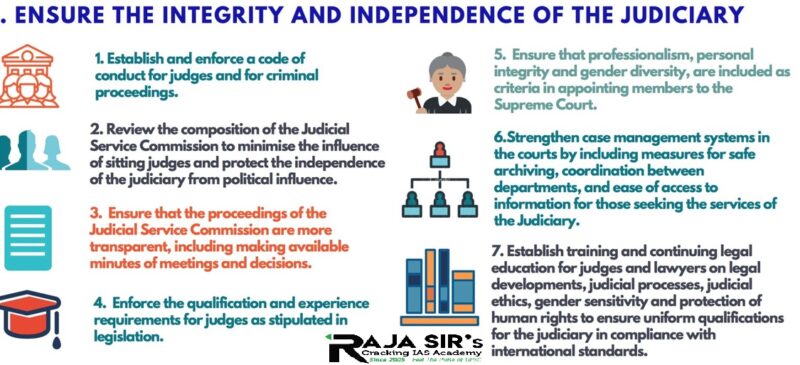
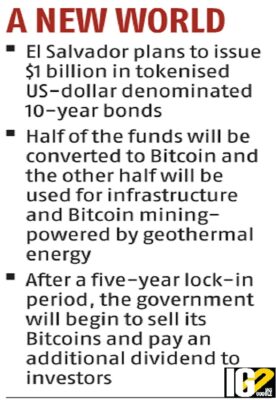 El Salvador intends to issue the world’s first sovereign Bitcoin bonds and build Bitcoin City, which will be free of income, property and capital gains taxes.
El Salvador intends to issue the world’s first sovereign Bitcoin bonds and build Bitcoin City, which will be free of income, property and capital gains taxes.
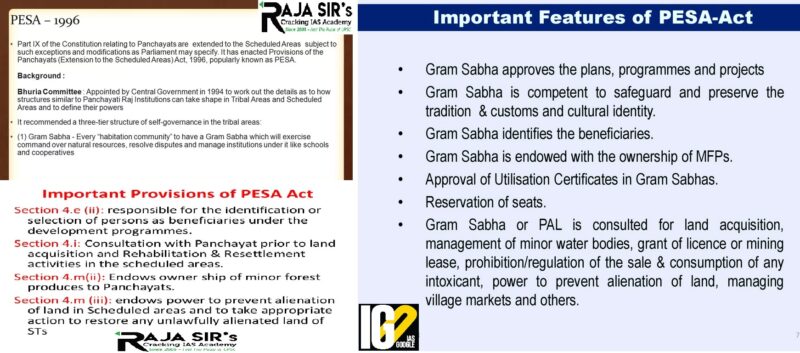
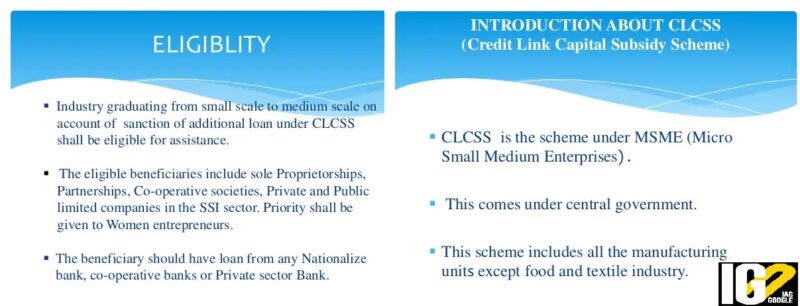 Recently, Union Minister for Ministry of Micro, Small, and Medium Enterprises launched the Special Credit Linked Capital Subsidy Scheme for the services sector.
Recently, Union Minister for Ministry of Micro, Small, and Medium Enterprises launched the Special Credit Linked Capital Subsidy Scheme for the services sector.


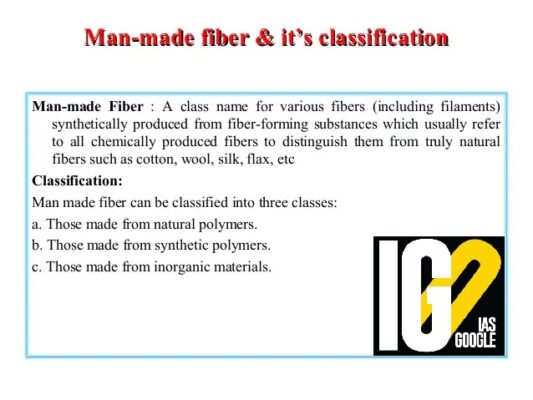



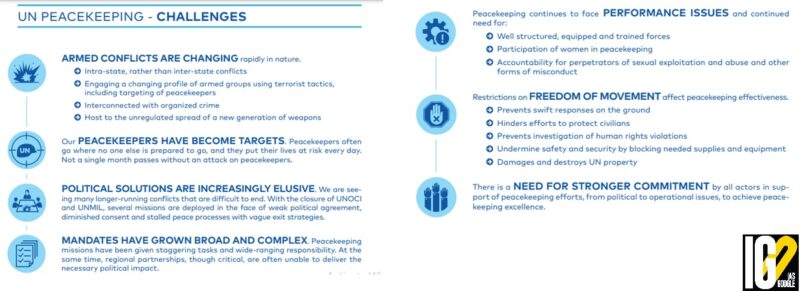



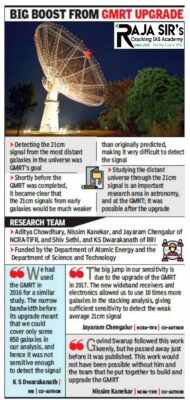
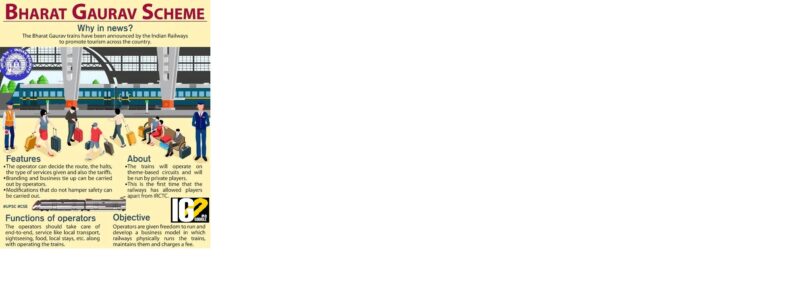


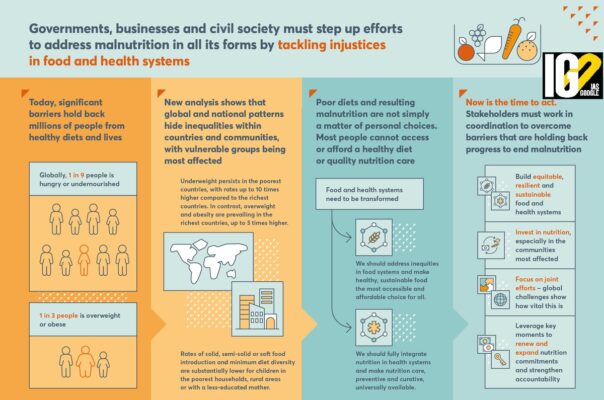


- In democratic set up, the judiciary is an impartial body that resolves disputes within the boundaries laid down by a Written Constitution.
- Independence of the judiciary is one of the basic structures of the Indian Constitution and has also been recognised as a human right by international conventions.
-
- It is envisaged as the organ for protecting the rights of the citizens, guaranteed under the Constitution.
- For the maintenance of the rule of law and fair judicial administration, an independent judiciary is of utmost importance.
- Independence of judiciary is necessary so that judge of the supreme court can function without fear or favor.
- The judiciary should remain independent to remain fully insulated from any external interference.
- Functional or decisional independence means the independence of judges to arrive at their decisions without submitting to any inside or outside pressure.
- Personal independence means the judges are not dependent on the government in any way in which might influence them in reaching the decision in particular cases.
- Collective independence means institutional administrative and financial independence of the judiciary as a whole.
- Internal independence means independence of judges from the judicial superiors and colleagues.
- It refers to, independence of a judge or judicial officer from any kind of order, indication, or pressure from his judicial superiors and colleagues in deciding cases.
- Article 124
- It deals with the appointment of Judges to the Supreme Court.
- Article 217
- It is regarding the appointment of Judges to High Courts.
- Articles 124 to 147 in Chapter IV of Part V
- Deal with the establishment and constitution of the Supreme Court, the appointment of judges and their powers rights, jurisdiction, and service conditions.
- Article 214 to 231 in Chapter V of Part VI
- Deals with the constitution of High Court, the jurisdiction, the appointment and conditions of the office of a Judge of a High Court, his powers, rights, service conditions, including transfer from one High Court
 El Salvador intends to issue the world’s first sovereign Bitcoin bonds and build Bitcoin City, which will be free of income, property and capital gains taxes.
El Salvador intends to issue the world’s first sovereign Bitcoin bonds and build Bitcoin City, which will be free of income, property and capital gains taxes.
- The fully ecological city would get geothermal power from a volcano.
- Half of the bond funds of the so-called “volcano bond” will be converted to Bitcoin and the other half will be used for infrastructure and Bitcoin mining powered by geothermal energy.
-
- Volcano bond is the bond which will enable the disaster relief agency to get the financial aid quickly to those who are suffering because of the eruption.
- Tribals in Chhattisgarh have been demanding the enactment of PESA rules for some time, it would provide more power over their resources.
- With respect to mineral resources in the state, PESA rules would embolden the gram sabha’s decisions over that of the central and state governments.
- It enables the residents of scheduled areas to strengthen their village-level bodies by transferring power from the government to the Gram Sabha.
- The Act thus enables Gram Sabha to maintain safety over their rights against external or internal conflicts.
- The laws, once formed, will give gram sabha the power on the minerals being excavated from their areas.
- The gram sabha will have to be kept informed by any agencies working in their village.
- It has the power to approve or stop the work being done within the village limits.
- It w the power over management of resources over water, forest, and land.
- It would have the power to monitor and prohibit the manufacturing, transport, sale, and consumption of intoxicants within their village limits.
- It has a duty to maintain peace and resolve conflicts arising in the village, while protecting tribal customs and traditions.

- The Panchayat (Extension of the Scheduled Areas) Act, 1996 was enacted by the government of India.
- Aim: To ensure self-governance through gram Sabha for people living in scheduled areas.
- Scheduled areas are identified by the Fifth Schedule of the Constitution of India.
- The Fifth Schedule designates tribal majority areas in ten tribal minority states within peninsular India including, Andhra Pradesh, Telangana, Gujarat, Jharkhand, Chhattisgarh, Himachal Pradesh, Madhya Pradesh, Maharashtra, Odisha, and Rajasthan.
- It designates tribal majority areas in north-eastern states, including Assam, Meghalaya, Mizoram, and Tripura.
- Of these, Meghalaya and Mizoram are tribal-majority states.
- To legally recognize the right of tribal communities, residents of the scheduled areas.
- To safeguard and preserve the traditions and customs of tribal communities.
- To empowers Gram Sabha to play a key role in approving development plans and controlling all social sectors.
- To enable the Panchayats at appropriate levels for implementing a system of self-governance with respect to issues like customary resources, forest produce, minerals, etc.
- Powers exclusive to Gram Sabha:
- Every village shall have its own Gram Sabha.
- A village shall consist of one or more habitations comprising a community and managing its affairs in accordance with traditions and customs.
- Gram Sabha is "competent" to safeguard and preserve:
- Traditions and customs of the people, and their cultural identity
- Community resources
- Customary mode of dispute resolution.
- Gram Sabha has mandatory executive functions:
- To approve plans, programmes, and projects for social and economic development.
- Identify persons as beneficiaries under the poverty alleviation.
- Issue a certificate of utilisation of funds by the Panchayat for the plans, programmes, and projects.
- Powers exclusive to Gram Sabha/Panchayat at appropriate level:
- Right to mandatory consultation in land acquisition, resettlement, and rehabilitation of displaced persons.
- Panchayat is entrusted with planning and management of minor water bodies.
- Mandatory recommendations by Gram Sabha or Panchayat to grant of prospecting licenses, mining leases, concessions for minerals.
- Powers endowed to Gram Sabha and Panchayat at appropriate level:
- Regulate sale/consumption of intoxicants
- Ownership of minor forest produce
- Prevent land alienation and restore alienated land
- Manage village markets
- Control over money lending to STs
- Control over institutions and functionaries in social sector.
 Recently, Union Minister for Ministry of Micro, Small, and Medium Enterprises launched the Special Credit Linked Capital Subsidy Scheme for the services sector.
Recently, Union Minister for Ministry of Micro, Small, and Medium Enterprises launched the Special Credit Linked Capital Subsidy Scheme for the services sector.
- SCLCSS scheme will help in meeting the technology-related requirements of enterprises in the services sector.
- It has a provision of 25% capital subsidy for procurement of Plant & Machinery and service equipment.
- It will give through institutional credit to the SC-ST MSEs without any sector-specific restrictions on technology upgradation.
- The scheme will felicitate SC/ST Entrepreneurs of the North-eastern region to take up entrepreneurship to become job givers than job seekers.

- The number of countries moving towards authoritarianism in 2020 was higher than that of countries going towards democracy.
- 20 countries moved in the direction of authoritarianism, seven moved towards democracy.
- Several democratization processes have been challenged in 2020 and 2021.
- Armenia’s conflict with its authoritarian Azerbaijan, in Nagorno-Karabakh, and a military rebellion in 2021 strain democratization process.
- In Ethiopia, the June 2021 elections were held amid increasing conflict in the Tigray region.
- In Afghanistan, the departure of the US military allowed the Taliban to quickly take over the country.
- Authoritarianism is a form of government characterized by the rejection of political plurality, use of a strong central power to preserve the political status quo, and reductions in the rule of law, separation of powers, and democratic voting.
- Authoritarian rulers mostly use force and coercion to command political uniformity and obedience.
- Civil liberties enjoy a low priority.
- Governmental control over judiciary and mass media is justified in the interest of public good.
- The rulers use bureaucracy and police as the instruments of their control over the people.
- Ideological principles like racialism or fundamentalism provide some basis for the exercise of state power over the people.
- The individual and social life is largely controlled by the state by the government of the state which is formed by one party or group.
- Democratic erosion refers to a loss in democratic quality, as observed through a statistically significant decline on at least one aspect of democracy.
- In 2020, 43 per cent of democracies had suffered declines in the previous 5 years.
- The countries that have declined the most are: Turkey, Nicaragua, Serbia, Poland, and Brazil.
- The number of democratically backsliding countries has increased in the last decade.
- Since many democratically backsliding countries are large, they represent more than 30 per cent of the world’s population.
- 70 per cent of the global population now live either in non-democratic regimes or in democratically backsliding countries.
- The percentage of the world’s population living in high-performing democracies is only 9 per cent.
- Brazil was the democracy with the largest number of declining attributes in 2020.
- India is the backsliding democracy with the most democratic violations during the pandemic.
- Violations include:
- Harassment, arrests, and prosecution of human rights defenders.
- The government or its policies; excessive use of force in the enforcement of Covid-19 regulations.
- The Philippines has deepened its democratic backsliding through increased militarization of the pandemic response and a crackdown on free media.
- The rise of illiberal and populist parties in government in the last decade is a key factor in democratic decline.
- Democratic backsliding is linked to increasing levels of societal and political polarization and low levels of support for democracy.
- Economic crises are tied to declining support for democracy and democratic backsliding.
- The struggle to balance freedom of expression with public safety, as well as the scourge of disinformation, lead to a democratic decline.
- The number of countries moving in an authoritarian direction outnumbered those going in a democratic direction.
- Electoral integrity is increasingly being questioned, even in established democracies
- The 2020 US presidential election had spillover effects, including in Brazil, Mexico, Myanmar, and Peru.
- Democratically elected governments are increasingly adopting authoritarian tactics.
- Authoritarianism is deepening in non-democratic regimes.
- The pandemic has thus had a damaging effect on non-democratic countries, closing their reduced civic space.
- The uneven global distribution of Covid-19 vaccines, undermine the uptake of vaccination programmes and risk prolonging the health crisis on basic freedoms.
- Government institutions, political parties, and media should reform democratic institutions, processes, relationships, and behaviors.
- They should update practices in established democracies, and protect electoral integrity, fundamental freedoms, and rights.
- Government institutions, with civil society, should come up with recrafting social contracts.
- They should prevent rising authoritarianism and democratic backsliding by
- Investing in democracy education at all levels of schooling,
- Buttressing the pillars of democracy that ensure accountability,
- Learning from other countries’ experiences infighting disinformation, and strengthening democratic guardrails.

- Recently Operation Molten Metal was conducted by Directorate of Revenue Intelligence (DRI).
- It is an intelligence operation mission in which several Indian and foreign nationals were identified indulging in smuggling gold into India from Hong Kong.
- Girls’ time to learn was constrained by increased household chores.
- Boys’ participation in learning was limited by income-generating activities.
- Girls faced difficulties in engaging in digital remote learning modalities in many contexts because of:
- Limited access to internet-enabled devices
- Lack of digital skills
- Cultural norms restricting their use of technological devices.
- Provide a range of remote learning options including low-tech and no-tech solutions spearhead.
- Support efforts to reach the most at-risk learner's design.
- Develop gender-responsive educational resources and tools.
- Provide appropriate teacher support and training use formative assessments to track learning outcomes.
- Schooling provides essential learning and when schools close, children and youth are deprived opportunities for growth and development.
- The disadvantages are disproportionate for under-privileged learners who tend to have fewer educational opportunities beyond school.
- When schools close, nutrition is compromised.
- Many children and youth rely on free or discounted meals provided at schools for food and healthy nutrition.
- When schools close, especially unexpectedly and for unknown durations, teachers become unsure of their obligations and how to maintain connections with students to support learning.
- School closures lead to furloughs or separations for teachers.
- Parents are often asked to facilitate the learning of children at home and can struggle to perform this task.
- This is especially true for parents with limited education and resources.
- In the absence of alternative options, working parents often leave children alone when schools close and this can lead to risky behavior's, including increased influence of peer pressure and substance abuse.
- Working parents are more likely to miss work when schools close in order to take care of their children.
- This results in wage loss and tend to negatively impact productivity.
- Health-care workers with children cannot easily attend work because of childcare obligations that result from school closures. This means that many medical professionals are not at the facilities where they are most needed during a health crisis.
- Localized school closures place burdens on schools as governments and parents alike redirect children to schools that remain open.
- It is a challenge to ensure children and youth return and stay in school when schools reopen after closures.
- This is especially true of protracted closures and when economic shocks place pressure on children to work and generate income for financially distressed families.
- When schools shut down, early marriages increase, more children are recruited into militias, sexual exploitation of girls and young women rises, teenage pregnancies become more common, and child labour grows.
- Schools are hubs of social activity and human interaction. When schools close, many children and youth miss out of on social contact that is essential to learning and development.
- Calendared assessments, notably high-stakes examinations that determine admission or advancement to new education levels and institutions, are thrown into disarray when schools close.
- Strategies to postpone, skip or administer examinations at a distance raise serious concerns about fairness, especially when access to learning becomes variable.
- Disruptions to assessments results in stress for students and their families and can trigger disengagement.
- It is a joint United Nations (UN) and European Union (EU) program.
- Under the initiative, targeted and large-scale investments are deployed in Africa, Asia, the Caribbean, Latin America, and the Pacific.
- To empower, promote, and protect the rights of women and girls worldwide ending all forms of violence against women and girls by 2030.
- The Government of India had set up a dedicated non-lapsable fund called ‘Nirbhaya Fund’ for implementation of initiatives aimed at enhancing the safety and security for women in the country.
- The Government has launched the National Cyber Crime Reporting Portal to enable public to report incidents pertaining to all types of cybercrimes, with a special focus on cyber-crimes against women and children.
- The Criminal Law (Amendment), Act 2013was enacted for effective deterrence against sexual offences.
- It prescribed even more stringent penal provisions including death penalty for rape of a girl below the age of 12 years.
- The Act also inter-alia mandates completion of investigation and trials within 2 months each.
- Emergency Response Support System provides a pan-India, single, internationally recognized number (112) based system for all emergencies, with computer aided dispatch of field resources to the location of distress.
- Using technology to aid smart policing and safety management, Safe City Projects have been sanctioned in first Phase in 8 cities (Ahmedabad, Bengaluru, Chennai, Delhi, Hyderabad, Kolkata, Lucknow and Mumbai).
- The Ministry of Home Affairs (MHA) has launched a cyber-crime portal for citizens to report obscene content.
- MHA has launched the ‘National Database on Sexual Offenders’ (NDSO)to facilitate investigation and tracking of sexual offenders across the country by law enforcement agencies.
- In order to facilitate States/UTs, MHA launched an online analytic tool for police called ‘Investigation Tracking System for Sexual Offences’.
- It is used to monitor and track time-bound investigation in sexual assault cases in accordance with the Criminal Law (Amendment) Act 2018.
- One Stop Centre (OSC)scheme is being implemented across the country.
- It is exclusively designed to provide integrated services such as medical aid, police assistance, legal counselling/ court case management, counselling and temporary shelter to women affected by violence under one roof.
- As per available information, 728 OSCs have been approved by Government of India, 595 OSCs are operational in the country.

- Earlier, the GST on Man-made fibres (MMF), MMF Yarn and MMF Fabrics were 18%, 12% and 5% respectively.
- Such taxation created build-up of credits and cascading costs.
- It further led to accumulation of taxes at various stages of MMF value chain and blockage of crucial working capital for the industry.
- Also, such differential rates create problems in tax compliance.
- Uniform GST rate will reduce the compliance burden of industry.
- The uniform tax ratewill help resolve the input tax credit (ITC) residues that were accumulated due to the inverted tax structure earlier.
- It will also benefit the work related to dyeing and printing servicesto absorb and recover unutilised input tax credit ITC.
- Since a significant portion of MMF products is expected to be exported, it will also lend a better scope for encashing the unutilised ITC.
- A uniform taxation will provide clarity to the issues caused by the inverted duty structure.
- Even though it will help in increasing cash flow and reduce the compliance burden for the assesses, it may increase the cost of the finished goods in the hands of the customer.

- The Inverted Duty structure is a mechanism wherein the rate of the tax on the inputs is greater than the rate of the tax on the output supplies.
- That is, the GST rate paid on purchases is more than the GST rate payable on sales.
- The inverted duty structure is a revenue loss for the government as it has to refund the tax already paid (in inputs).
- Under GST, the inverted duty structure is identified for goods and not for services.
- Under this, the tax payers face capital issues as crucial resources remain blocked in the form of ITC.
- There are problems in utilizing the unused tax credit even though GST have provisions for it.
- Inverted duty structure has led to a situation where businesses were not able to use the tax credits fully to settle their final output tax liability, leading to accumulation of unused tax credits.
- Thus, it caused refund-related issues under the GST regime.
- Man-made fibres (MMF) are fibres made by man.
- They are mainly of two types: synthetic and cellulosic.
- Synthetic fibres are produced from crude oil
- The main varieties are polyester, acrylic and polypropylene.
- Cellulosic fibres are produced from wood pulp.
- The most common natural polymer fibre is viscose, which is made from the polymer cellulose obtained mostly from farmed trees.
- The main varieties are viscose fibre, modal, etc.
- Fibres from Inorganic Materials
- The inorganic man-made fibres are fibres made from materials such as glass, metal, carbon or ceramic.
- These fibres are very often used to reinforce plastics to form composites.
- However, the man-made fibre and natural fibre mainly cotton blends are more popular.
- The domestic MMF industry of India mainly comprises of two components: polyester and viscose.
- India is the second largest producer of both polyester and viscose globally.
- MMF is primarily used to produce 100% non-cotton fabrics and blended fabrics:
- These are used in readymade garments, home textiles and other industrial textiles.
- Factors that boost the demand of manmade fibres in India are as follows:
- increasing use in nonwovens and technical textiles
- changing consumer trends including increasing emphasis on fitness and hygiene,
- rising brand consciousness,
- fast changing fashion trends,
- increasing women participation in workforce.

- It is the removal of a forest or stand of trees from land that is then converted to a non-forest use.
- Deforestation can involve the conversion of forest land to farms, ranches, or urban use.
- Farmers clearing land for small-scale subsistence agriculture.
- Land development such as road construction near the forest area
- Human resettlement
- Forest Fires
- Impact on global warming
- Deforestation can both reduce the carbon sink value of the land while increasing emissions through wildfires.
- The Amazon Basin has been one of the largest sinks of CO2, absorbing 1/4 of terrestrial land captured carbon
- Impacts on water supply
- The deforestation of the Amazon rainforest has had a significant negative impact on Brazil's freshwater supply.
- Impact on local temperature
- The deforestation of the Amazon rainforest will raise the temperature in Brazil by 1.45 degrees.
- It is a moist broadleaf tropical rainforest in the Amazon biome that covers most of the Amazon basin of South America.
- The majority of the forest is contained within Brazil with 60% of the rainforest.
- Further, Peru with 13%, Colombia with 10%, and with minor amounts in Bolivia, Ecuador, French Guiana, Guyana, Suriname, and Venezuela.
- Four nations have "Amazonas" as the name of one of their first-level administrative regions, and France uses the name "Guiana Amazonian Park" for its rainforest-protected area.
- The Amazon represents over half of the planet's remaining rainforests.
- Around 400-500 indigenous Amerindian tribes live in the Amazon rainforest.
- Amazon River which runs through the Amazon rainforest is the world’s second-longest river after the Nile.
- The forest is so thick that the ground remains permanently in darkness. Only 1% of the sunlight makes it to the forest ground.
- Amazon rainforest is a carbon sink it absorbs carbon dioxide and stores it. So, it is a major player in maintaining carbon levels globally.
- One-fourth of the world’s western medicine uses ingredients from the Amazon rainforest

- Matosinhos Manifesto is the resolution adopted unanimously by the 22 member states of the ESA.
- Aim: To tackle the urgent and unprecedented societal, economic and security challenges faced by Europe and its citizens.
- It lays down a vision for the continent in terms of maintaining and expanding its activities in space.
- It outlines three urgent initiatives called Accelerators and two mission proposals:
- The initiatives involve measures to tackle climate change, respond to natural disasters, and to protect spacecraft from orbital debris and space weather.
- The first initiative involves improving the ability of Earth-observing satellites, to provide higher-quality data that can be used to tackle the climate crisis.
- Aim:
- To better understand the current state of Earth by focusing on space for a green future.
- To develop scenarios and solutions for sustainable life on this planet.
- To contribute effectively to achieving climate neutrality.
- The document proposes the creation of a “digital twin of earth”
- Digital twin is a simulated replica that can be used for modelling and in order to predict events such as floods, fires, or droughts years in advance.
- It also helps in eliminating worldwide greenhouse emissions by 2050.
- The second accelerator is called “Rapid and Resilient Crisis Response”.
- Aim: To support governments to act decisively on crises facing Europe, from flooding and storms to wildfires.
- It calls for more intensive use of space-collected data — such as imagery from satellites — in order to deal with natural disasters.
- Applications could range from monitoring to the coordination of rapid response units.
- The third accelerator is “Protection of Space Assets”
- Aim: To safeguard ESA astronauts and assets from interference by space debris and space weather.
- The main goal of this mission would be to look for signs of alien life throughout our Solar System.
- The two missions aim to establish the ESA’s own system to launch astronauts into space and to probe Jupiter’s frozen moon Enceladus.
- The first calls for Europe to establish its own mechanism to launch astronauts into space.
- The second envisions sending an ESA probe to one of the moons of Jupiter or Saturn to return samples to Earth.
- ESA is an intergovernmental organisation that was formed in 1975.
- Aim: To develop Europe’s space capabilities.
- The organisation has 22 member states.

- Peacekeeping by the United Nations is a joint effort between the Department of Peace Operations and the Department of Operational Support of the UN.
- It is a unique instrument to help countries torn by conflict to create the conditions for lasting peace.
- Peacekeeping forces are contributed by member states on a voluntary basis.
- UN peacekeepers are often referred to as Blue Berets or Blue Helmets because of their light blue berets or helmets.
- The Special Representative of the Secretary-General, the official leader of the mission.
- He/ She is responsible for all political and diplomatic activity, overseeing relations with both the parties to the peace treaty and the UN member-states in general.
- The Force Commander
- He/ She is responsible for the military forces deployed.
- Chief Administrative Officer
- He/ She oversees supplies and logistics, and coordinates the procurement of any supplies needed.
- To protect civilians, actively prevent conflict, reduce violence, strengthen security and empower national authorities to assume these responsibilities.
- It requires a coherent security and peacebuilding strategy that supports the political strategy.
- To help host countries to become more resilient to conflict, laying the groundwork to sustain long-term peace, including by addressing root causes of conflict.
- The financial resources of UN Peacekeeping operations are the collective responsibility of UN Member States.
- Consent of host country, political stability of the post-conflict situation, political will of the host country and substantial financial and logistical support from the UN office
- The UN weakness of integrated planning mechanisms, antiquated procurement procedures, a semi-permanent funding crisis and a shortage of personnel and specialist units and technologies, logistic and transport deficiencies Humanitarian Issues:
- Lack of Cooperation within the peacekeeping mission.
- Military capture of humanitarian assistance.

- It is an ongoing and protracted conflict between Russia and Ukraine that began in February 2014.
- The war has centered on the status of the Ukrainian regions of Crimea and Donbas.
- 1991: Ukrainian parliament declares independence from USSR following an attempted coup in Moscow.
- 2013: Ukraine's cabinet abandons an agreement on closer trade ties with EU, instead of seeking closer co-operation with Russia, leads to Protests gathering pace, as 100,000 people attend a demonstration in Kiev.
- 2014: Parliament passes restrictive anti-protest laws as clashes turn deadly.
- Russia's parliament approves President request to use force in Ukraine to protect Russian interests.
- President of the Russian Federation signs a bill to absorb Crimea into the Russian Federation.
- Pro-Russian separatists have fought Ukrainian forces in two eastern regions of Ukraine but a fragile ceasefire has been agreed upon by both sides.
- 2015
- Russia has redeployed some of its elite units from Ukraine to Syria to support Syrian President Bashar al-Assad.
- Russian Federation President admitted that Russian military intelligence officers were operating in Ukraine.
- 2019
- 7% of Ukraine's territory is under occupation.
- Russia violates the Minsk agreements on a regular basis.
- The Minsk Agreements are a basis for a political resolution of the conflict in Donbas.
- Constant inflow of Russian troops and weaponry is the main obstacle to peace in Donbas.
- Russia continues to supply weapons, ammunition and fuel to the occupied territory through the uncontrolled section of the Ukrainian-Russian state border.

- Gallantry Awards have been instituted by the Government of India.
- Aim: To honour the acts of bravery and sacrifice of the Armed Forces personnel, other lawfully constituted Forces, and civilians.
- The awards are announced twice in a year - first on the Republic Day and then on the Independence Day.
- Wartime Gallantry Awards:
- A top military decoration awarded for the highest degree of bravery and self–sacrifice in the battlefield.
- This wartime gallantry decoration is only awarded to military personnel.
- It is the second highest military decoration awarded for acts of conspicuous gallantry in the presence of the enemy on land, at sea or in the air.
- It is the third highest Wartime gallantry award presented for acts of bravery in the battlefield.
- Peacetime Gallantry Awards:
- A highest peacetime military awarded for of bravery and self–sacrifice away from the battlefield.
- This decoration may be awarded either to military or civilian personnel.
- It is the second highest peacetime military decoration awarded for acts of valor, courage, or self-sacrifice away from the battle field.
- This is third highest for the act of valor, courage away from the battlefield.
- Distinguished Service & Gallantry Medals:
- Wartime Distinguished Service Medal awarded for distinguished service of the most exceptional order during war/conflict/hostilities.
- It is awarded to all ranks of Indian armed forces including those of Territorial Army Units, Auxiliary Reserve forces and members involved in nursing services.
- A second highest medal for Wartime Distinguished Service after Sarvottam Yudh Seva Medal.
- Third highest military decorations medal for distinguished service during wartime.
- It is awarded for a high degree of distinguished service in an operational context.
- Peacetime Service & Gallantry Medals
- A military award in recognition to peace-time service of the most exceptional order.
- It is awarded to all ranks of Indian armed forces.
- It is the second highest peacetime distinguished service medal.
- Gallantry awards along with some other Defence Distinguished Service awards are conferred to the awardees by the President at the Defence Investiture Ceremony every year at the Rashtrapati Bhawan.
- However, the Param Vir Chakra and the Ashoka Chakra are conferred by the President to the awardees on the Republic Day Parade at the Rajpath.

- The study with the Upgraded Giant Metrewave Radio Telescope (uGMRT) found that:
- the magnetic field and temperature are two quantities that appear to play the major role in deciding how intense the radio pulse will be.
- There are 15 known MRPs so far.
- 11 MRPs were discovered with GMRT.
- 8 of MRPs were discovered in 2021 alone.
- The success of the GMRT programme has opened up a new window to study sun’s magnetospheres.
- The Main-sequence Radio Pulse emitters are stars that are hotter than the sun.
- They emit an enormous magnitude of magnetic fields, which are much stronger than stellar winds prevalent on stars.
- Due to this, they emit bright radio pulses like a lighthouse.
- The first MRP was discovered in 2000, as a result of high sensitivity of GMRT.
- MRPs are not rare, but are difficult to detect.
- This is due to the fact that the radio pulses are visible only at certain times, and the phenomenon is mostly observable at low radio frequencies.
- The radio pulses emitted by MRPs contain a vast amount of information regarding the stellar magnetosphere.

- The Giant Metrewave Radio Telescope is a unique facility for radio astronomical research at metre wavelengths.
- It is set up by National Centre for Radio Astrophysics (NCRA) at Khodad, near Pune.
- NCRA of the Tata Institute of Fundamental Research (TIFR) is the premier institute for radio astronomy in India.
- GMRT is a very versatile instrument for investigating a variety of radio astrophysical problems ranging from nearby Solar system to the edge of observable Universe.
- GMRT was recently upgraded with new receivers, and is known as Upgraded Giant Metrewave Radio Telescope (uGMRT).
- Its astronomical objectives are:
- To detect the highly redshifted spectral line of neutral Hydrogen expected from proto-clusters or protogalaxies before they condensed to form galaxies in the early phase of the Universe.
- To search for and study rapidly-rotating Pulsars in our galaxy.
- Recently, Doordarshan and All India Radio win UNESCO-ABU Peace Media Awards 2021
- The awards were launched in 2021 by Asia Pacific Broadcasting Union (ABU) and United Nations Educational Social and Cultural Organization (UNESCO) Bangkok Office.
- Objective: To highlight and promote the crucial role of free, independent and pluralistic media for building positive peace in the minds of men and women.
- The Awards honour innovative and creative content, which informs and educates audiences on best practices of building positive peace in three critical areas that have increasing urgency in achieving the 2030 Agenda for Sustainable Development:
- Transformative Education
- Living in harmony with nature
- Living well with diversity
- It has retained the controversial exemption clause that allows the Government to keep any of its agencies outside the purview of the law with minor changes.
- The committee discussed one of the Controversial provision in the Bill, Clause 35.
- Clause 35 deals with conditions under which the government can access personal data without consent.
- Clause 35 in the name of “public order”, ‘sovereignty’, “friendly relations with foreign states” and “security of the state” allows any agency under the Union Government exemption from all or any provisions of the law.
- It also allowed any agency under the Union Government exemption from all or any provisions of the law in the interest of purposes such as national security.
- Clause 35 deals with conditions under which the government can access personal data without consent.
- The members had argued that “public order” should be removed as a ground for exemption.
- They had also pressed for “judicial or parliamentary oversight” for granting such exemptions.
- They asserted that here should be an order in writing with reasons for exempting a certain agency from the ambit of the Bill
- They also said that only partial exemption should be given to the agency if needed.
- However, the report noted that this clause was for “certain legitimate purposes” and thus it was retained.
- It also said that the exemptions are guaranteed under Article 19 of the Constitution and the Puttaswamy judgment.
- It recommended the need to balance the concerns regarding national security, liberty and privacy of an individual.
- It also reiterated that this exclusive power of the government should be used only under exceptional circumstances.
- It said no social media platform should be allowed to operate unless the parent company handling the technology sets up an office in India
- It should also set up a statutory media regulatory authority, for the regulation of the contents on all such platforms.
- It recommended development of an alternative indigenous financial system for cross-border payments on the lines of INSTEX (European Union).
- The Instrument in Support of Trade Exchanges (INSTEX) is a European special-purpose vehicle (SPV) established in 2019.
- Its mission is to facilitate non-USD and non-SWIFT transactions with Iran to avoid breaking U.S. sanctions.
- It recommended the Central Government to prepare and pronounce an extensive policy on data localisation, in consultation with all the sectoral regulators.
- It also mentions that the government should make efforts to establish a mechanism for the formal certification process for all digital and IoT devices that will ensure the integrity of all such devices with respect to data security.
- The Bill creates two parallel universes— one for the private sector where it would apply with full rigour and one for the Government where it is riddled with exemption, carve outs and escape clauses.
- It leads to differential treatment of the same law.
- Bill does not provide adequate safeguards to protect the right to privacy and gives an overboard exemption to the Government.
- Clause 35 is open to misuse since it gives unqualified powers to the Government.
- The Bill pays little attention to “harms arising from surveillance and effort to establish a modern surveillance framework”
- Bill has no provision to keep a check on collection of data by hardware manufacturers.
- The committee suggested the setting up of an indigenous architecture, which can be an alternative to the internationally accepted SWIFT payment system.
- A mechanism may be devised under which social media platforms will be held responsible for the content from unverified accounts.
- It has called for a mechanism in which social media companies can be treated as publishers in some circumstances.
- Treating a social media company such as Facebook or Twitter as a publisher will make it liable under laws pertaining to illegal speech.
- The Joint Committee of Parliament (JCP)was set up in 2019, to take up the personal data protection bill, commonly called as privacy bill.
- It meant to give a legal shape to the Right to Privacy.
- Aim: To protect individual rights by regulating the collection, movement, and processing of data that is personal, or which can identify the individual.
- The Bill trifurcates personal data:
- All personal data - data from which an individual can be identified.
- Sensitive personal data - financial, health, sexual orientation, biometric, genetic, transgender status, caste, religious belief, and more.
- It mandates that sensitive personal data should to be stored only in India.
- It can be processed abroad only under certain conditions including approval of a Data Protection Agency (DPA).
- Critical personal data - The government at any time can deem something critical such as military or national security data.
- Mandates fiduciaries to give the government any nonpersonal data when demanded.
- Calls for the creation of an independent regulator Data Protection Agency (DPA),which will oversee assessments and audits.
- Each company will have a Data Protection Officer (DPO) who will liaison with the DPA for grievance redressal, recording maintenance etc.
- Only offence punishable with imprisonment: Re-identification and processing of de-identified personal without consent
- The government can exempt any of its agencies from any or all provisions of the Act, for processing of personal data in certain cases such as in interest of security of state.

- Aim: To boost tourism by connecting these train services to the cultural and religious spots initially.
- Bharat Gaurav trains will be run by both the private sector and the IRCTC in theme-based circuits.
- The service providers can be an individual, company, society, trust, or a joint venture.
- Private players can lease such trains them from the railways.
- The tour operators have the freedom to fix the rates.
- Service provider will offer all-inclusive package to tourists, including rail travel, hotel accommodation, sightseeing arrangement etc.
- Customer support units for hand holding the service provider.
- Engage With Science is a part of the India Science OTT channel project.
- Aim: To publicise and popularize STEM video content on India Science.
- India Science is an Internet-based science Over-The-Top (OTT) TV channel.
- It is an initiative of the Department of Science and Technology (DST).
- Implemented and managed by Vigyan Prasar (VP).
- It will help foster the culture of STEM innovation.
- It will serve as a platform where young minds are exposed to experiential learning with the focus on invention and collaborative problem-solving to maximize impact.
- The collaboration plays a vital role in reviving and updating education practices to keep up with the technological advances.

- The Atal Innovation Mission (AIM) is a flagship initiative set up by the NITI Aayog in 2016 to promote innovation and entrepreneurship in the country.
- Entrepreneurship promotion through Self-Employment and Talent Utilization
- Here, innovators would be supported and mentored to become successful entrepreneurs.
- Innovation promotion: To provide a platform where innovative ideas are generated.
- To create scientific temper and cultivate the spirit of curiosity and innovation among young minds.
- To develop new programmes and policies for fostering innovation in different sectors of the economy.
- To provide platforms and collaboration opportunities for different stakeholders
- To create an umbrella structure to oversee the innovation & entrepreneurship ecosystem of the country.
- Atal Tinkering Laboratories (ATLs) are established by Atal Innovation Mission with the vision to ‘Cultivate one Million children in India as Neoteric Innovators’
- Aim:
- To foster curiosity, creativity, and imagination in young minds by inculcating skills such as design mindset, computational thinking, adaptive learning, physical computing etc.
- ATL provide a workspace where young minds give shape to their ideas and learn skills through hands on do-it-yourself mode.
- Young children get a chance to work with tools and equipment to understand the concepts of STEM (Science, Technology, Engineering and Math).
- They will be provided with equipment on – science, electronics, robotics, open-source microcontroller boards, sensors and 3D printers and computers.
- It will foster inventiveness in children.
- They can conduct different activities ranging from regional and national level competitions, exhibitions, workshops on problem solving, designing and fabrication of products, lecture series etc. at periodic intervals.
- To create workspaces where young minds can learn innovation skills, sculpt ideas through hands-on activities, work and learn in a flexible environment.
- To empower our youth with the 21 century skills of creativity, innovation, critical thinking, design thinking, social and cross-cultural collaboration, ethical leadership and so on.
- To help build innovative solutions for India’s unique problems and thereby support India’s efforts to grow as a knowledge economy.
- Vigyan Prasar (VP) is an autonomous organization under the Department of Science and Technology (DST), Government of India.
- Aim: To serve India’s science popularization agenda.
- To undertake, aid, promote, guide, and coordinate efforts in popularisation of science
- It involves inculcation of scientific temper among the people and to increase the knowledge about science among all segments of the society.
- To provide and promote effective linkages on a continuing basis among various scientific institutions.
- To undertake development of materials – audio, visual, audio-visual and printed methods and modes of communication.
- To organise research work, courses, workshops, seminars, symposia, training programs, fairs, exhibitions, film shows, popular discussions, street plays, quizzes, song dance-dramas etc.
- Vigyan Prasar’s (VP) programme Science on Television is one of the popular initiatives.
- The objective is to bring out video science programmes on different aspects of science and technology in different Indian languages to demystify science and inculcate scientific temper and kindle involvement.
- Science & Technology through radio is another of the flagship programs of
- The Gender and Technology Communication Program has been established.
- Objective: To empower women through Science & Technology communication, through resource material for women of all age groups.
- It is also engaged in the popularization of Astronomy at national level through various means.

- PMAY-G was introduced in 2016.
- Central Government came up with the vision to fulfil the ‘Housing for All’ scheme by the year 2022.
- Aim: To provide pucca house with some of the basic amenities.
- At present, the minimum size of the houses to be built under the scheme has been increased to 25 sq. mt. from 20 sq. mt.
- Interest subsidy is 3%
- The maximum principal amount for the subsidy is Rs.2 lakh
- The cost will be shared in a 60:40 ratio between the Central and State governments in plain areas.
- In the Himalayan states, northeastern states, and the Union Territory (UT) of Jammu & Kashmir, the ratio is 90:10.
- 100% financing from the Centre for Union Territories including the UT of Ladakh.
- Beneficiaries are provided Rs.90.95 per day of unskilled labor from Mahatma Gandhi National Rural Employment Guarantee Act (MGNREGA).
- Assistance for construction of toilets of up to Rs.12,000 will be provided under Swachh Bharat Mission-Gramin (SBM-G).
- Families with houses having one, or two rooms with a kutcha wall and kutcha roof.
- Households without a literate adult above 25 years of age.
- Households without an adult male member aged between 16 and 59 years of age.
- Households without any adult member between 16 and 59 years of age.
- Households without any able-bodied members and with a disabled member.
- Landless households who derive income from casual labour.
- Scheduled Caste, Scheduled Tribe, and Minorities.
- Lengthy approval process is a major barrier towards curbing the cost of projects.
- Higher GST slab on elementary products such as cement, tiles and bricks have led to a spike in prices, thus impacting the overall construction costs.
- Technology plays a vital role in reducing the cost of construction
- However, India is still a long way from adopting the most efficient technologies required for mass construction.
- A shortage of skilled workers poses as a major challenge towards the achievement of the goal of PMAY-G.

- The Global Nutrition Report was initiated during the first Nutrition for Growth Initiative Summit (N4G) in 2013.
- Aim: To inspire governments, civil society, and private stakeholders to act to end malnutrition in all its forms.
- The report is produced each year to cast a light on where progress has been made and identify major challenges.
- It plays an important role of helping stakeholders to account on the commitments they have made towards tackling malnutrition.
- 2 million children under 5 years of age are stunted, 45.4 million are wasted and 38.9 million are overweight.
- Over 40% of all men and women are now overweight or obese.
- Anaemia levels are worsening in 161 countries.
- In the Africa region, no country is on course to meet diet-related Non-Communicable Diseases targets.
- Only 105 countries are on track to meet the target for tackling childhood overweight.
- Over a quarter of countries are on track to meet stunting and wasting targets.
- Lower-income countries continue to have the lowest intakes health-promoting foods.
- Higher-income countries have the highest intakes of foods with high health and environmental impacts, including processed meat and dairy.
- These countries have the highest levels of overweight and obesity.

- Additional financing required to meet nutrition targets has grown significantly, due to the impacts of Covid-19.
- A cost of US$10.8 billion would be required annually between 2022 and 2030 to meet global nutrition targets on stunting, wasting, maternal anaemia.
- Around US$39−50 billion needed annually to meet both nutrition-specific and nutrition-sensitive needs.
- India has made no progress on anaemia and childhood wasting.
- Over half of Indian women in the age group 15-49 years are anaemic.
- Over 17 % of Indian children under 5 years of age are affected.
- India is among 23 countries that have made no progress on reducing childhood wasting.
- Wasting refers to children whose weight is low-for-their height.
- 2 per cent of adult women and 3.5 per cent of adult men are living with obesity in the country.
- India is meeting 7 of the 13 global nutrition targets.
- These include sodium intake, raised blood pressure obesity and diabetes.
- It is among 53 countries to meet the target for stunting, but over 34 per cent of children under 5 years of age are still affected.
- The country is among 105 countries to meet the target for childhood overweight and among 53 countries to meet the target for exclusive breast feeding.
- 58 per cent of infants in the age group 0-5 months are breastfed in India.
- No country is on track to achieve the target on reducing salt intake or to halt the rise in adult obesity.
- No global targets are set to address micronutrient deficiencies.
- There is no specific target that captures malnutrition among children and adolescents.
- 155 million people are pushed into extreme poverty globally, as a result of the pandemic.
- Global food demand is creating (35%) of all greenhouse emissions and using substantial number of environmental resources.
- No region is on track to meet the set of Sustainable Development Goals aimed at limiting the health and environmental burdens related to diets and food system.
- More financing in tackling nutrition related problems is required.
- Traditional forms of financing for nutrition like external and domestic, must be sustained and increased.
- Policy initiatives are urgently needed to transform food systems.
- Global nutrition monitoring must expand to key targets for improving diets and health that go beyond micronutrient deficiencies, hunger, and excess weight.
- Better granular data is needed to understand the current state of nutrition, and ensure that impact can be measured and monitored.
- Stakeholders should focus more on nutrition action that supports equitable, healthy, and sustainable diets for all.









 Latest News
Latest News General Studies
General Studies